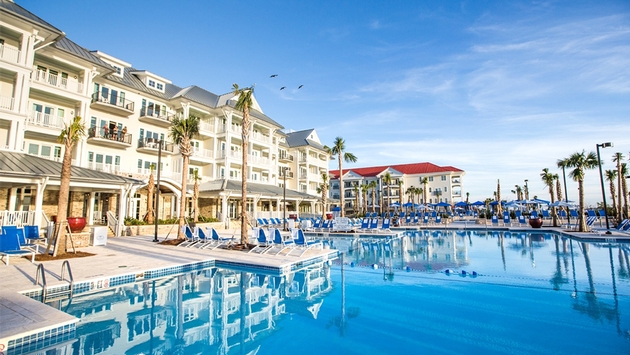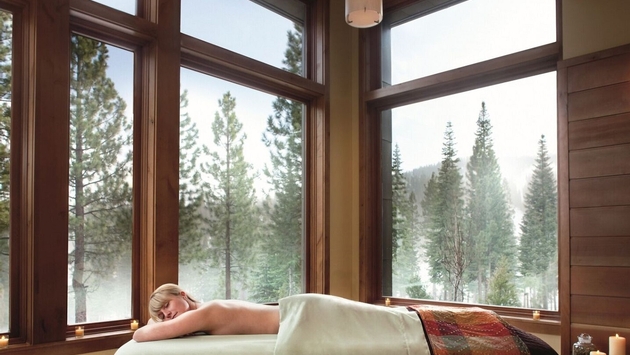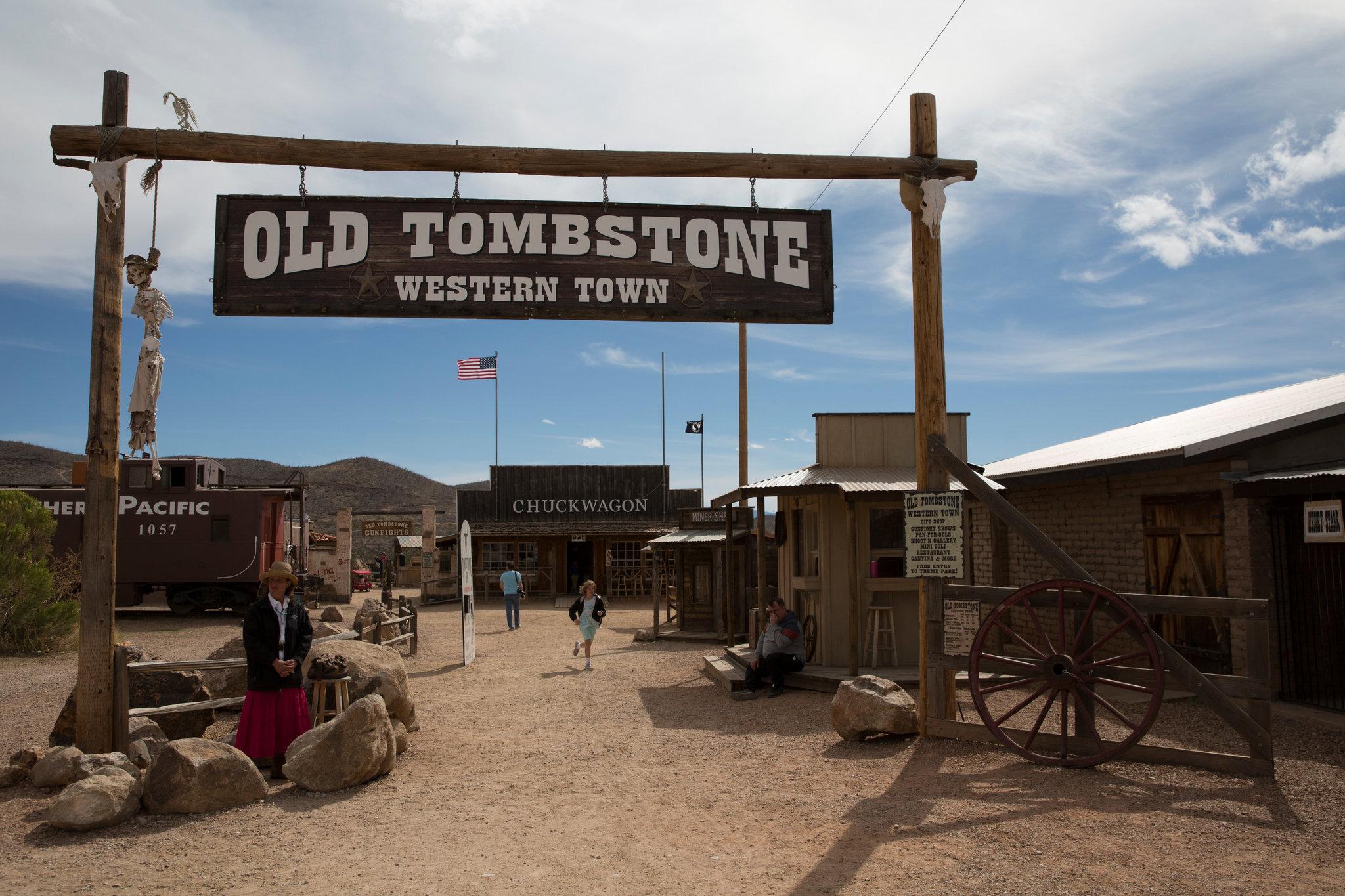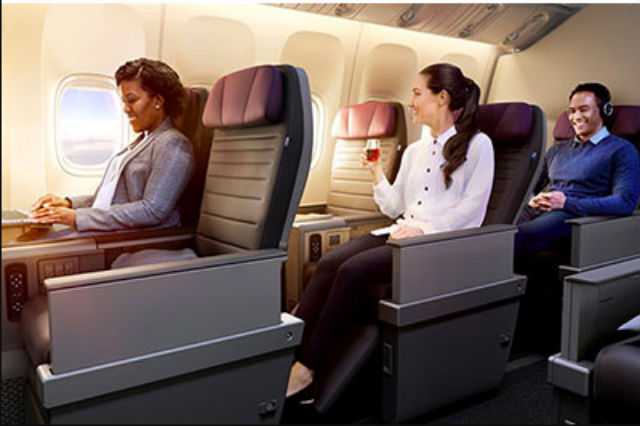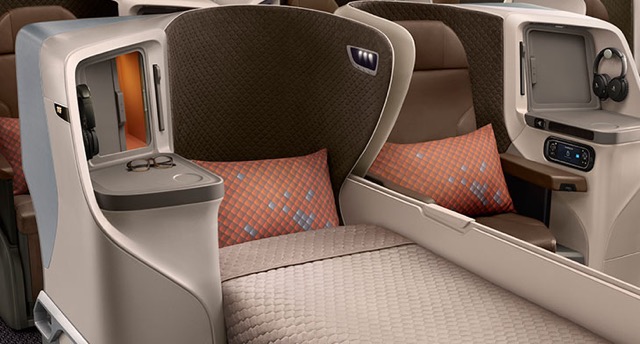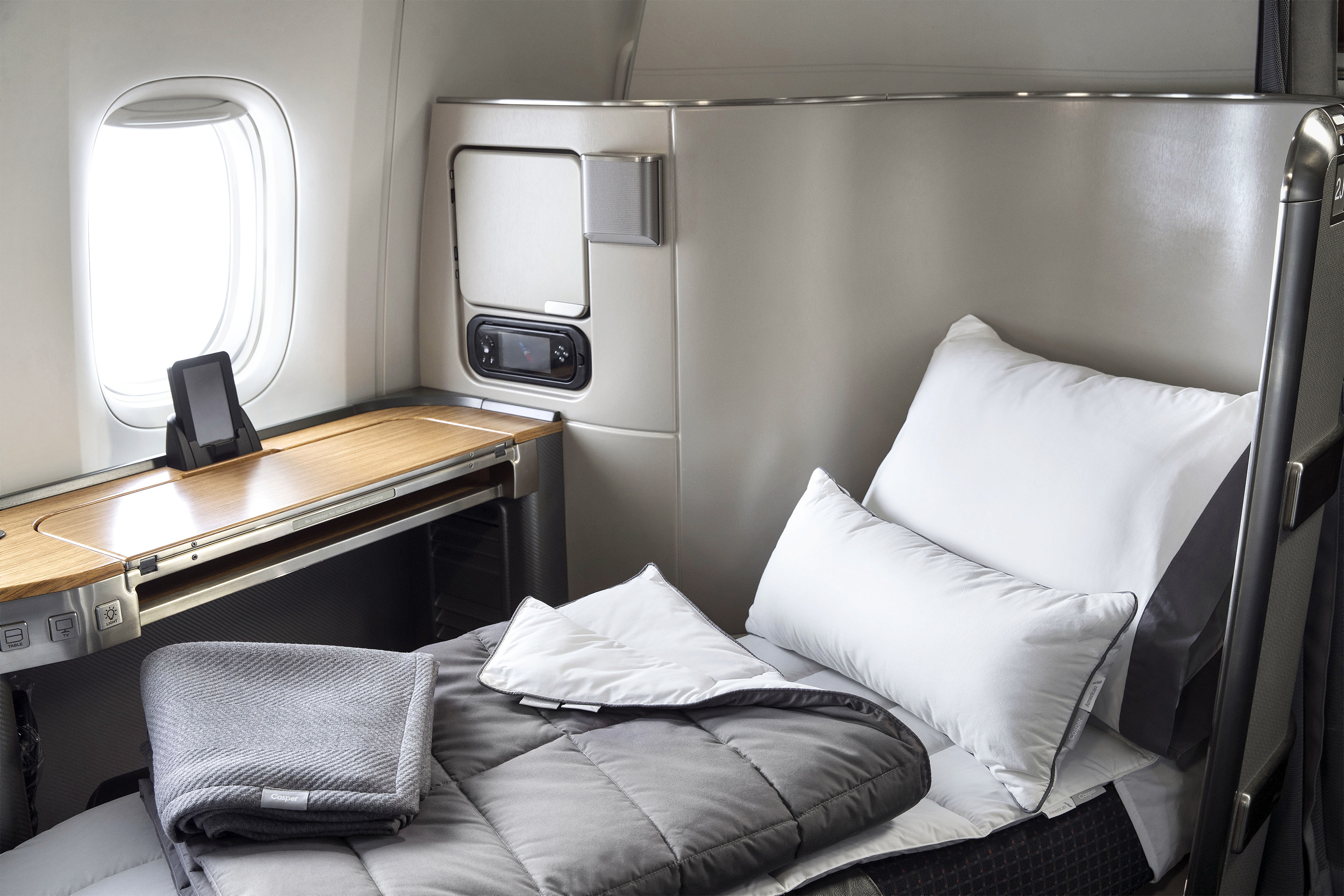The best ways to stay connected with your family while traveling

One of the hardest parts of traveling for work is staying connected with your family. Whether you’re away for one night or weeks at a time, it can take a toll on the entire household. According to the U.S. Travel Association, Americans logged more than 460 million trips for business purposes in 2017. That’s a lot of meals, bedtimes, and extracurricular activities the business traveler is missing! It’s also hard for the kids who don’t get their goodnight hug, morning snuggles, or good luck kiss before a big test. There are some ways to make the traveling transition more bearable. Here are five ways to stay connected with your family when someone is away on business.
1. Schedule a remote family dinner
Kids love routines, and even if someone in the family is traveling, you should try to stick to the schedule as close as possible. Remote family dinners can be a fun tradition to start. Have your kids choose their favorite pizza and order one for the family and one for the person traveling. Make it game and order at the same time and see whose pizza shows up first! Your kids will appreciate that you’re eating dinner with them even if you’re hundreds of miles away. If you’re on a longer trip, pick a theme for each night, like tacos, pasta or burgers. This can take some additional planning (especially if you’re in a different time zone), but it’s well worth it for your entire family to have a fun memory of your work trip!
2. Give your child a Selfie doll to hug while you’re gone
Bedtime can be the hardest time of the day for kids when a parent is traveling. Budsies Selfie dolls can bring relief to a child’s separation anxiety. The custom doll is made to look like mom or dad so a child can hug and squeeze it whenever they miss their loved one. They are a great way for a kid to stay connected with their parent when they can’t give them a physical hug or kiss. The Seflie doll is there for kids to squeeze and talk to when they’re missing mom or dad. They also have an optional voice recorder inside so your child can play your voice saying “I love you”, or “miss you”, or any special phrase you may say to them. It’s the perfect gift to give your child right before leaving on your trip.
3. Video chat will become your best friend when traveling
Thanks to technology, it’s easier now than ever before to stay connected with your family when you’re away for business. Video chat is the best way to communicate so you can see your loved ones. Try to make a schedule so you know what time the person who’s on the road is available to chat when everyone is at home. It’s best to carve out some family time around breakfast and dinner to check in with each family member. Taking a five-minute break to talk about the day can really make your child and spouse feel connected. Thanks to video chat, you’ll never miss out on any big events either. If your child has a sports game, recital, or other fun activity while you’re away set up a calendar reminder so you can call in and watch some of the action.
4. Send your family a postcard
Even when you’re traveling for business, you may have the opportunity to visit some amazing places. Share those experiences with your family by sending them a postcard. You may think postcards are outdated, however, there are some really cool apps that let you upload your travel photos and create your own custom postcard. After you include a short message, the company will send the postcard directly to your loved ones. Your family will love getting mail from you while you’re gone and see all of your adventures and landmarks that you’re enjoying.
5. Keep the countdown going
One of the most important things to do before you leave on a trip is to remind your kids that you won’t be away forever and that you’re coming home! It’s hard, especially for young children to understand the concept of time. So it’s better to talk to them in a way they’ll understand. For example, you’re going to be gone for six bedtimes, or you’ll see them after soccer practice. Making a countdown marker before you leave can also help your kids visually see how much longer you’ll be away. It can be a simple construction paper chain, where each morning your kids get to take one-off, or you can cross off the boxes on a calendar until they get to the day you come home which has a big circle on it. This gives your kids something fun to do each day and a reminder that they’re one day closer to seeing you!
The best city hotels in India

India is a vast country with endless accommodation possibilities. While a lot of the 5 star hotels offer the standard luxury you would expect, there is a handful of them that offer much more, making sure every stay will be something special. Here are my top 5 city hotels in India which give you that little extra.
The Lodhi, New Delhi
Straight away starting off with one of the best. The hotel used to be part of the famous Aman group, which already gives you an indication of what to expect. Nothing is too much and service is key. But it doesn’t stop there as the rooms are massive and most of them have their own private pool. I mean, which city hotel can offer this? Specially in a metropolis which hasn’t always the space for such things. Of course there are many other reasons why this place is so unique and perfect when looking for accommodation in this city. I has its own bakery, one of the best spa’s in the country, and the best restaurant in India (Indian Accent) is also located on their grounds. It’s a given that all the food is exquisite, and combined with the impeccable service it is hard to find any flaws at The Lodhi.
St-Regis, Mumbai
Mumbai is a bustling city which never sleeps. Traffic can be a nightmare and the noise from the streets is constant. The St-Regis Mumbai though makes sure you escape all of this madness and serves as a true oasis. It is located in India’s tallest hotel tower, giving it plenty of space for their amazing rooms and suites. Of course all of them enjoy the amazing views which you can find all around. The hotel also has countless restaurants, all of them among the best you can find in Mumbai. Most of them can be found on the highest floors, giving you not only delicious food, but also the added bonus of the amazing views over the city. Rooftop bar, exclusive members only club, rooftop swimming pool, …you name it and they have it. Rather get your shopping fix sorted? Not a problem, as the hotel is adjacent to one of the biggest shopping malls in the city. What more do you need?

The Oberoi Amarvilas, Agra
If there is one place travelers dream about when they go to India, it is visiting the Taj Mahal in Agra. And the Oberoi Amarvilas is the best place to stay when doing so. This oasis of luxury not only gives you all the amenities you look for when staying in an opulent place like this, it also gives you amazing views of the Taj Mahal from your room. No need to look for any other selling point, even though there are plenty. Every room has butler service and they are all a show piece of Indian craftsmanship. The beautiful pool is another perfect hideaway to take it all in or to cool off from the heat which you can often find in this part of India. Tip of the day: enjoy some amazing Indian tea at the lounge. The golden domed ceiling and once again the amazing views of the Taj Mahal will make you speechless.

The Leela Palace, Udaipur
Another property where the views and location alone would be more than sufficient to make this list, though lucky enough there is much more than that. All the rooms and suites at the Leela Palace offer its guests views over Lake Pichola, combined with all the modern amenities travelers are looking for these days. The decorations include artefacts and furnishings from the Rajasthan area, turning this hotel in a true palace. One of the highlights is dinner at the Sheesh Mahal restaurant, an alfresco fine-dining restaurant which has the most amazing views over the lake while you enjoy unique traditional touches like pouches of spice to freshen the air, scented candles and flowers,… Makes sure to end your day at the Library bar. The intimate lounge boosts a style from a bygone era and has the finest selection of whiskies and liquors in the whole city. Enough reason to stay another night.

Taj Falaknuma Palace, Hyderabad
Last but certainly not least is the Taj Falaknuma Palace which is a 32-acre hilltop estate overlooking Old Hyderabad. Forget your Uber or limo service, as cars are not permitted beyond the front gate. Instead you arrive at the reception in either a golf cart or a horse carriage. How about that for an entrance? Every guest will feel like royalty when staying over here. The beautiful rooms and suites are all offering modern luxuries while still remaining the flair and grandeur from the past century. Food is important and culinary delights from all over the world can be enjoyed in all the different restaurants. One of the fun facts is that the palace has the longest dining table in the world (108 feet long) so don’t be shy and invite a few friend of your as there is plenty of space at the table. Children are also welcome in this wonderful heaven of opulence and indulgence, and the countless activities organized for them will surely make them feel like royalty too.

By Kristof Eyckmans
Barcelona’s secret gardens

Barcelona is one of the most bustling and urban metropolises; the young and the old, the past and the present, and the local and the foreign coming together in perfect (if sometimes a little hectic) harmony. Staying in such a lively city like Barcelona with a population of over 1.5 million, it is only natural that visitors might feel a little overwhelmed during their time here. Although Barcelona is primarily city, there exists a scattering of hidden green spots, or secret gardens, within the city’s urban framework. Places where you can lose yourself for a couple of hours, without leaving the city.
Parc del Laberint d’Horta
One of Barcelona’s oldest and most disputed gardens- many argue over whether the garden is of Romantic or Neoclassical style- Parc del Laberint d’Horta was opened as a public park in 1971. It is often hailed as a museum garden due to its meticulously meddling maze which forms a visitor’s route through the green space. There is beautiful garden landscaping, mythological sculptures, a free-falling waterfall, a wild garden, and even a pavilion dedicated to muses. This exquisite space is perfect for taking a picnic and enjoying a quiet sunny afternoon.
The Mossèn Costa I Llobera Gardens
The Mossèn Costa I Llobera Gardens are one of the biggest gardens in Europe, and are the result of a collaboration between architect Joaquim Maria Casamo, and gardening-school teacher Joan Pañella. They were first opened in 1970 and include a variety of cacti and plants that are adapted to live in hot and dry climates. Further to a staggering 3.16 hectares of exotic greenery from a variety of regions, the gardens have also been voted one of the 10 best gardens in the world.

Jardins del Palau Robert
Forming part of the Palau Robert building (the former residence of politician, businessman, and aristocrat, Roberto Robert y Surís) these gardens include an impressive variety of plants in three large parterres. As a city, Barcelona underwent a significant expansion at the end of the 19th century and these gardens offer visitors a unparalleled glimpse into the lives of the capital’s Bourgeoisie. Be sure to look out for La Lluna, a stainless steel and iron moon created by Kiku Mistu in 2001, and painted by students at the Joan Amades School for the Blind.

Palo Alto
Once a former leather factory, Palo Alto has since been turned into an art studio and creative hub. It is now also one of Barcelona’s most imaginative and greenest gardens. The space was discovered more than twenty-five years ago by artist and animator Javier Marsical, who became so enamored with the abandoned ruins that he decided to move his studio there on the spot! Along with the help of his brother Santi Mariscal and garden designer José Farriol, Palo Alto is now home to a collection of art studios and is also used as offices for Barcelona’s creatives. Visitors are welcome during office hours when Palo Alto’s metal gate is open.

El Bosc de les Fades
Although not a green garden as such, El Bosc de les Fades brings the magical woodland into the city’s urban zone. This café and restaurant have been inspired by fairy tales and will fool you into thinking that you really are sat in an enchanted fairy forest. This space is not only exclusively unique, but offers visitors something truly memorable to take back from their stay in Barcelona.

By Sandra Roig from www.apartmentbarcelona.com
Escape to Charleston for weekend getaways

Photo courtesy of The Beach Club at Charleston Harbor Resort and Marina
Both the coastal and inland regions of the country’s southern tier have long been popular escape locales for weekenders throughout the East for many years. The region’s big cities offer world-class cultural events and a holiday style all their own, while coastal resorts might see fewer guests during the troughs of the winter. That doesn’t mean they slow down with the hospitality, and they often have some pretty attractive packages going on to attract off-season visitors.
Tee Off at Sea Island
The Sea Island resorts rarely offer discounts, so this is exciting news. In celebration of the 7th Annual RSM Classic, they’re offering a third night for the price of the lowest score shot during a round of tournament play for stays in January and February. The lowest score was 61 shot by Mackenzie Hughes, so that means that the third night rate is $61, and that’s valid for bookings at The Cloister or The Lodge at Sea Island.
Even in the winter, enjoy Sea Island’s blue tidal creeks, picturesque sand dunes, and green laurels, in addition to three championship golf courses and highly rated service.
Intro Rates and Spa Discounts at The Beach Club at Charleston Harbor Resort & Marina
The Beach Club at Charleston Harbor Resort & Marina is one of the newest properties in the portfolio of The Leading Hotels of The World, and the hotel is offering introductory rates—from $239 for weekenders and $169 for midweek guests (as Charleston is a leisure destination, the typical weekday/weekend rate changes are flipped). The property is convenient to downtown Charleston in the historic Mount Pleasant Village and features views of the city skyline and Ravenel Bridge. Guest rooms feature custom-crafted furniture with hand-painted touches in classic Lowcountry style.
Hyatt will introduce its newly-acquired Alila brand soon

Hyatt has announced plans to introduce its newly-acquired Alila brand in Europe, with a development in La Gruyere, in western Switzerland.
The group acquired Alila when it purchased lifestyle hotel management company Two Roads Hospitality last year, and will add Alila La Gruyere to the portfolio when it opens in 2023.
The hotel will overlook a lake in Pont-La-Ville, a municipality in the district of Gruyère in Switzerland’s Fribourg canton, and forms part of the Golf Resort La Gruyere development.
It will feature 85 hotel rooms alongside generous spa, conference and meetings facilities, various food and beverage outlets, 27 hotel residences, 105 private primary and secondary residences and a world class 18 hole golf course remodeled by Robert Trent Jones Jr.
Following the recent acquisition of Two Roads Hospitality, we are thrilled to announce plans for the first Alila property in Europe. The region of La Gruyère with its medieval Gruyères town is a great location for a brand that embodies a contemporary expression of centuries-old traditions.
Hyatt describes the Alila brand as offering the combination of innovative design and luxury in unique locations, set apart by an unprecedented level of private space, crafted artisanship, personalized hospitality, and bespoke journeys.
The brand currently operates around 20 properties in Indonesia, India, China, Cambodia, Malaysia, Oman and the US.
hyatt.com, alilahotels.com
A Roman weekend in luxury

There are not enough adjectives to describe Rome, one of the most fascinating cities in the world, Millenary, historical, elegant, heritage and, eternal. Whether you’re looking for history, churches, luxury, nature or art, Rome has something that will attract every luxury traveler. I recently spent a long weekend rediscovering the eternal city in 3 days.
Lets begin with my favorite luxury hotel so stay in the city center. Located in the heart of the old city of Rome, very close to the Spanish Steps, the Hotel Eden is a luxury establishment whose beginning dates back to 1889, but which has been recently renovated to provide it with modern comforts. Thus, the hotel offers an unforgettable stay in its 98 rooms and suites, elegantly decorated with a classic Italian style and with details of craftsmanship. The rooms have full marble bathrooms full of amenities. In addition, the establishment has more details for its guests, for example, they can consult the daily press on paper or access through their terminals to newspapers and magazines courtesy of the hotel.
Highlights its restaurant spaces with two restaurants and a lounge bar. La Terraza offers a gourmet menu, Michelin Star, with unique views of Rome; Il Giardino Ristorante has Italian dishes and La Libreria offers snacks, salads, tea and cocktails in the evening. In addition, guests will find more luxury spaces such as the 24-hour gym, 24-hour reception service, and an exclusive urban spa, with the possibility of submerging in private Jacuzzis.


What to see in Rome during 3 days? What you want. Really. Rome is one of the cities with the greatest wealth in the world, and not even a year would be enough to visit every church, every square, every historical ruin.
So the best advice we could give is to visit what you are most excited about. As an example, visit the Colosseum, and visit the Sistine Chapel in private, unique experiences we recommend you plan before you arrive with your travel agent or consultant.
Of course, never leave Rome without flipping a coin in the Fontana di Trevi. Surely this monumental fountain is not as big as you imagined, and it will be difficult to make your way through the crowd. But, even so, the Fontana di Trevi is a must, and they say that if you flip a coin in the water of the fountain, you will go back to Rome. Although you’ll come back anyway, sure. Visit it at night, when it empties almost completely, and feel like Anita Ekberg and Marcello Mastroianni in La dolce vita.
Two or three days are few to run from one attraction to the next and, in addition, in Rome you can enjoy walking, losing and letting yourself be surprised.

For shopping lovers: Walk through Via Condotti. This street, which opens in front of the Piazza Espagna, houses some of the most exclusive shops in Rome like Prada or Gucci,
Visit Rinsacente, the best of what you can wish for shopping, under a single roof. An offer that is continuously renewed, signed by international and local brands… and do not miss their rooftop terrace with a stunning view of the city. You will be able to enjoy a glass of Prosecco after a long morning shopping.
Regarding restaurant recommendations, here are my personal favorite: La Pergola, located in the Rome Cavalieri hotel, of the Waldorf Astoria chain, is the only restaurant with three Michelin stars in Rome.
Entering Imàgo, located at the Hassler’s 6th floor panoramic Michelin starred restaurant in Rome with its unique view over the city.
Dal Bolognese is an elegant restaurant in Rome, preferred by important politicians as well as executives and artists. We recommend to book in advance.
At Michelin starred AROMA at Palazzo Manfredi, you will find Rome reflected in a menu of classic Italian dishes on a picturesque outdoor terrace offering an unparalleled Colosseum view.
The Ristorante Alla Rampa for over 40 years offers dishes from ancient Roman cuisine, right in the Spanish Steps, here you will find a non-touristic Italian restaurant with great seafood and other Italian dishes.

I hope this guide of Rome has been useful for you; Rome is known as the “Eternal City” because in it time seems to have stopped for centuries. Its monuments and the remains of imposing buildings make a walk through its streets a journey in time to the peak of the city’s splendor. When are you planning to visit Rome again?
By Carmen Caballero of exotiktraveler.com
‘Four Seasons Jet 2.0’ to take flight in 2021
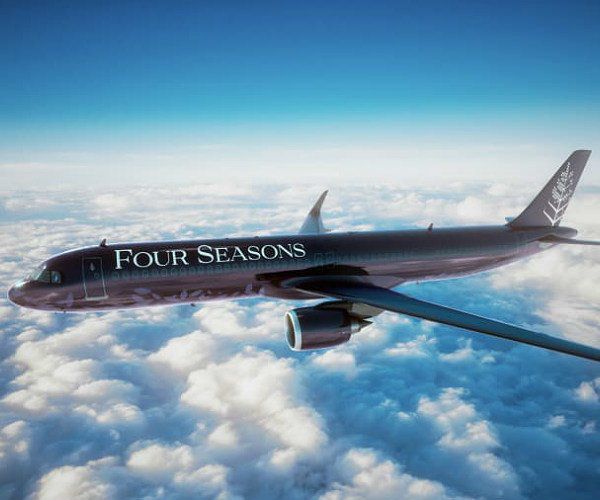
The Four Seasons Private Jet is getting a very glamorous upgrade. A fully customized Airbus A321 LR, part of the new Airbus NEO family, is being brought in to replace the current model, the luxury group has announced. Due to take flight in early 2021, the new aircraft will feature “the widest and tallest cabin in its class” as well as spacious lavatories and an expansive lounge area. The state-of-the-art plane has room for 48 passengers — with a layout design that ensures guests can socialize easily while in their seats.
World Superyacht Awards 2019: the nominees not to miss

Boat International Media in association with Oyster Yachts will hold the 14th annual edition of The World Superyacht Awards 16 – 18 May 2019 in London. The awards are aimed to recognise remarkable design, engineering and construction innovations of the world’s finest luxury yachts. This year’s ceremony will take place in the heart of the City, in Old Billingsgate, returning to London after several other venues, such as Venice, Amsterdam and most recently Florence. The three day programme includes golf day at the exclusive St. George’s Hill Club and clay shooting at West Wycombe House, along with a journey aboard the Belmond British Pullman train prior to the opening party at Kensington Palace.
See Komodo dragons up close on this luxury cruise around Komodo National Park

I had been wandering Komodo for over an hour when I encountered its most famous resident. Covered in muddy, chainmail-like scales, the world’s largest lizard half-heartedly flicked his long, forked tongue, then heaved his awkward limbs and kept moving. A grinning ranger walked up to me, wielding a stick and playing twangy Bahasa ballads from his cell phone: “I guess you didn’t look good enough to eat.”
25 of the most beautiful places around the world

The world’s a spectacular place, full of hidden and overt beauty in every corner. But beauty’s also subjective. It’d be impossible to get a unanimous decision on the most beautiful places around the world — but we think this list is a good start to plan your travels. In celebration of Earth Day, we’ve rounded up the best of the best. From lush African forests to vast Latin American deserts, watery Balkan paradises to ancient Middle Eastern cities, here are our picks for the world’s top breathtaking, beautiful destinations.
The best hotels for Wellness travelers
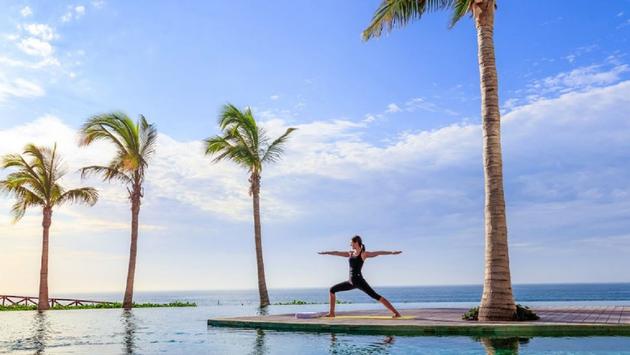
“Wellness” is now a mighty word in the travel industry, a sizeable niche outpacing the general travel market by as much as 50 percent. “Wellness travelers also spend about 140 percent more on travel than the average traveler, so hotels are clamoring to play in this space,” said Dena Roche, who runs a site called The Travel Diet. Here are the top brands leading the wellness space:
Personalized Nutrition at the Fairmont Scottsdale Princess, Four Seasons and Red Rock Casino
The niche spa concept Well & Being has partnered with a roster of hotels to offer customized healthy culinary menus (from a quinoa energy breakfast with dried apricots, macadamia nuts, honey, coconut oil and edamame succotash) to fitness classes with personalized nutrition consultations, grocery store checklists, nutrition label lessons and more everyday solutions.
In-room Mindful Meditation Sessions at the Park Hyatt New York
As an extension of Hyatt’s partnership with Frank Lipman for their “Be Well” program, Park Hyatt New York announced an ongoing collaboration with MNDFL, a meditation studio in New York that has a cult following. They’re now offering both private in-room meditation sessions in addition to group sessions at their 13,000 square-foot atelier spa, Spa Nalai. All sessions include a complimentary food pairing created by the culinary team at Park Hyatt New York and inspired by the “living wall” at MNDFL’s downtown studio.
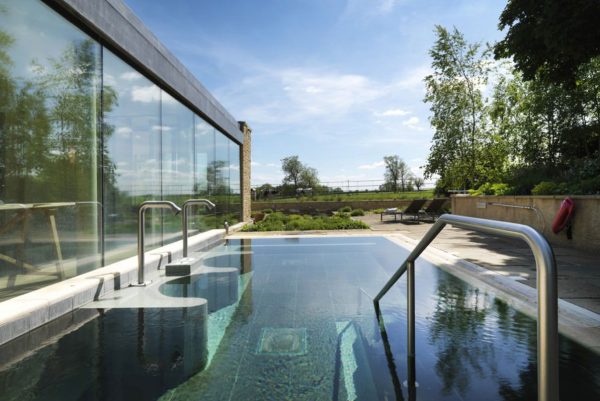
Get Chiseled at a Spartan Gym at 1 Hotel South Beach
1 Hotel South Beach has specifically hired a “director of mind & movement,” Christianne Phillips, and the brand’s first-ever Spartan Gym opened in December 2016. Imagine getting a Deep Detox Yoga session overlooking the Atlantic Ocean, or a Core Body Burn with some of Miami’s best trainers as you check into the lobby enveloped with mossy terrariums: even Deepak Chopra would appreciate that.
Train with an Olympic Gold Medalist at Beaver Creek Westin Riverfront
The Westin Riverfront Resort & Spa at Beaver Creek has World Champion Josiah Middaugh, who serves as the resort’s Resident World Champion helping guests to get chiseled, triathlon training style. It’s a complete package priced at $419 per night in a studio suite, three hours of training with Middaugh including an hour in the pool, an hour on a Computrainer bike and an hour in the gym, and there are frills and extras to add in packages including spa treatments.
Get Your Digital Detox Fix at Mandarin Oriental Worldwide
Surrendering your cell phone to the Mandarin Oriental hotel gods might seem like the most daunting thing you’ve ever done (okay, perhaps there’s that skydiving lesson), but thanks to the Mandarin Oriental’s brand-wide digital wellness initiative, you can indulge in the electronic-free zone stylishly. The initiative, which began in September, includes all sorts of holistic and therapeutic fixings from crystals, eye masks, meditation pillows, calming teas, oils and even coloring books to help you unwind and unplug. You’ll be glad to surrender that iPhone 7, as you sip your matcha green tea, and follow a regimen developed by experts from the Mayo Clinic, and reclaim the fresh-cleaned device, repackaged in its own protective shielding.
Get your inner kinks out with Art Therapy classes at the Costa Rica Marriott San Jose
A colonial hacienda set on a 30-acre coffee plantation, Costa Rica Marriott San Jose invites guests to network and decompress over art therapy coloring classes, while indulging in local coffee and authentic treats. With adult coloring books becoming all the rage, it is a wonderful opportunity to dabble in paints and discover your inner creativity through art at a historic location.
“Spa Happy Hours” at the Mondrian London
As a healthier alternative to a traditional happy hour, a new Spa Social concept at the Mondrian London invites guests to relax at the Tom Dixon-designed spa facility with their funky loungers, bean bags and pillows. They’ll sip glasses of Thomson and Scott’s Skinny Prosecco, which contains no added sugars, and also herbal teas and breath the air infused with an “altitude oil” by Annee De Mamiel, which purportedly clears the mind and boosts the immune system. Each Spa Social ticket is 65 pounds.
5 car-free aka care-free Greek destinations

For most of us, our daily routine consists of crossing busy intersections, walking on sidewalks so we won’t get hit by cars, and even using our own vehicle to get to any place that we consider to be far from home. What if we could go about our day without turning our heads to see if there’s a car behind us so we can safely cross the street? What if we crossed the street without looking left and right just because we saw a picture-perfect spot and we absolutely needed to observe it up close? That sounds like a care-free walk that gives us the opportunity to enjoy our time to the fullest. What if you weren’t interrupted by the noise that trucks make at the same time when you thought you were having a romantic moment overlooking the sunset with your loved one? What if you could finally breathe fresh air in a town without having to smell the car fumes?
You’re in luck because we have gathered not one or two but five destinations in Greece that can offer you the carefree, noise-free, pollution-free, and of course the car-free vacation that you’re looking for. Enjoy!
Hydra Island
What an aristocratic island! Located in the Argo Saronic Gulf, just a stone’s throw away from the busy capital making it the ideal island for Athenians to escape to for a long weekend. Hydra is a very interesting island as its town is built on the slopes of a hill around its port and it seduces its visitors at first sight with its charming stone mansions. As travelers aren’t in awe already, Hydra has prohibited entirely the use of cars and other motor vehicles. People either walk, use boats to go beach hopping or they use the traditional mean of transportation, none other than a donkey! Hydra is such an impressive yet elegant island with translucent waters and beautiful green surroundings that no one can resist.
Lindos, Rhodes Island
Let us travel to the Dodecanese, a stunning group of islands, but let’s focus on Rhodes and in particular on Lindos. It is the second most visited archaeological site in Greece, along with Delphi. This ancient village that is surrounded by the sea proudly showcases a centuries-old acropolis that grandly overlooks the archipelagos. The old town is as if you’re stepping back in time to the medieval ages, but so well put together and preserved. The vehicle-free streets allow visitors to explore its mesmerizing ancient corners by walking or taking donkey rides on its narrow paved alleys between whitewashed buildings, slightly resembling the Cycladic architecture.

Dilofo, Zagorochoria
Going up to the mountains of the prefecture of Ioannina, Dilofo is one of the Zagorochoria Villages that has been declared a traditional settlement, as it is perhaps the best-preserved settlement in the region. It has kept its traditional character and all the elements that make it so unique are visible today, such as stone fountains, cobbled streets, small churches and mansions. The people of Dilofo, urge everyone to protect the natural environment and for them to move around on foot or to explore the region by bicycles since, within the settlement, cars are prohibited.

Monemvasia, Peloponnese
Moving down to the southern part of the Peloponnese, there is a castle-town that is also known as the “Gibraltar of the East”. Once you set foot in this car-free town, you will be transported to a majestic well-preserved “stone ship” as Yiannis Ritsos, a famous Greek poet, described his birthplace as. Wander around the aristocratic mansions and the vaulted alleyways and be enchanted by the stone-built churches that have become one with nature. Once you’ve explored every inch of Monemvasia, take a dip in the crystal-clear waters and taste the unique dishes the region has to offer.

Nafplio, Peloponnese
Nafplio was the first capital of the newly born Greek state, located in the Peloponnese and is considered to be one of the most breathtaking towns in Greece. That means a lot as it is being compared to many amazing seaside towns, however, Nafplio has a rare charisma that only travelers who have been there will completely grasp. It has all the elements that a seaside town should have and be in Greece, it, of course, offers a historic aspect as well. The old town of Nafplio is car-free and it’s where the magic happens. Syntagma Square is packed with luxury boutique hotels, restaurants with any cuisine you can imagine, and shops selling the most unique items. Every little street beholds a surprise so sit at one of the cafes and start planning your adventure.

By Maria Nikolakaki from www.beyondspacesvillas.com
Experience the Galapagos with a private yacht charter
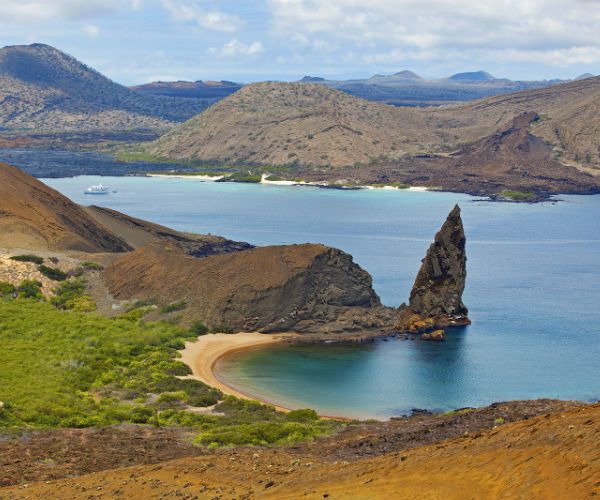
No two ways about it, the best way to experience the Galapagos is by chartering a private yacht. The Galapagos are an exciting and very unique location, unlike any other island archipelago in the world. One of the most exciting aspects of a private yacht charter experience, besides the fabulous natural life is that It is readily apparent, when fully immersed in the natural world of the Galapagos Islands, why Darwin developed his theory of evolution. A private crewed yacht charter of the Galapagos means that you and only your group are the guests on board the chartered yacht. This is a private experience with no strangers on board. A private crewed charter yacht is also called a “whole boat charter”, meaning there are no options for anyone to book just by the cabin with you on the same yacht.
The quality of the overall experience, how much you enjoy the Galapagos, and your “take away” understanding of the Galapagos is a much better experience when on a private crewed whole boat charter rather than onboard a vessel booked by the cabin with strangers and here are five reasons why.

Flexibility
On a whole boat charter, the expedition times each day can be very flexible, timed for when you want to go ashore. The itinerary is still pre-set by the Galapagos National Park Authorities, to which the Captain must abide, (Unless the itinerary is changed as described in reason #4) and you will still have an onboard naturalist who will be with you when shoreside or on a water expedition, both of which are good things. With a pre-set itinerary, the Park Authorities spread the yachts, including mini and larger cruise ships, out across the Galapagos Islands, so there is never a crowded anchorage. This keeps humanity from interfering in the natural world to retain a more realistic experience of the Galapagos, and assures that humans do not scare the natural life with too many intruders at one time. Having a naturalist with you on all expeditions assures that everyone stays on the required trails and that the natural life is protected, however; the naturalist is also a wealth of information and will point out everything and anything you want to know about the formation of the Galapagos Islands, and the natural life found on each island.
The bonus, on a whole boat charter, it is up to you when to go ashore for a shoreside expeditions or when, for instance, you want to swim with the sea lions perhaps for a game of “hide and seek”. Or sit with a sea lion pup while it waits for its mother to return from sea after gathering food for her little one. Unlike a vessel booked by the cabin, no loud speaker announces shoreside or water expeditions nor must you assemble at a designated location on board, line up single file to board the tender and follow the leader single file once ashore. On a private yacht charter, your expeditions times are discussed with your Naturalist, usually the night before, and you decide when you might want to go ashore or to swim with the Galapagos penguins. It is your schedule.

Small groups
Seeing and learning everything is a totally different and a much better experience with a smaller group on a whole boat charter rather than with perhaps 50 people on a shoreside expedition when on a larger “by the cabin” yacht. With a smaller group the naturalist can allow you to gather around him while he speaks and perhaps you might watch a baby blue footed booby bird hatch out of his shell and with flexible timing, have the time to see that hatchling poke his head out of the shell for the first time. Any expedition on land or in the water can, (within reason given the cruising schedule to which the Captain must adhere), be as long or as short as wanted and focused on that which your group or family wants to see and learn.
When on a vessel with strangers, booked by the cabin, the expedition is pre-set both in length and topic to appeal to a cross section of people. There may be 50 people in a shoreside group. And 50 people can hardly be huddled around the naturalist to see something very special, such as perhaps a sea lion pup nursing with his mother for the first time. It is in a small group with flexible timing where a naturalist can really explain Darwin’s Theory of Evolution and how a particular species might adapt in one manner on one island while on another nearby island the same species might adapt in an entirely different manner. For instance, marine iguanas were originally all land iguanas, however on certain islands in the Galapagos there is no vegetation on land. Iguanas on those islands uniquely learned to dive off of cliffs into the water below and stay under water for a length of time to feed on sea algae, and other underwater vegetation. To survive, land iguanas on barren islands became sea iguanas, while nearby on a neighboring island with vegetation, land iguanas remained as land iguanas feeding on vegetation on land.

Getting up close
Whole boat charters are generally for a smaller group of less than 20, which is an ideal number to be able to be up close and personal with the natural life, to see and hear all that the naturalist has to say, and to be able to swim with the penguins and snorkel without having a flipper in your face.

Itinerary requests
Itineraries are pre-set; however perhaps there is something of particular interest that may not be on an itinerary, or perhaps the itinerary may not include enough time in an area of particular interest, or there may be a concern about sea conditions on a particular itinerary. On a private yacht charter, with enough advance notice and depending on the time of year, such as not during holidays, with payment of a small fee to cover the cost for Park Authority time to re-arrange all of the itineraries for that week to accommodate a special request, and still keep all yachts spread out, it may be possible that your special itinerary request can be accommodated and the itinerary can be changed as you might want. On a yacht booked “by the cabin”, the advertised itinerary is the only itinerary that can occur.

Catering for specific interests
Often, even in a smaller group, there may be various ages, and/or varied interests. As everyone must have a naturalist with them when on an expedition, on a private charter, a second naturalist can be hired for an additional cost so that two expeditions can happen at the same time. Perhaps there are young children in the group that might more enjoy being on the beach, swimming and learning about sea turtle tracks in the sand rather than a trek inland to see iguanas and various bird nesting grounds. Or perhaps part of the group are super athletes and want to challenge themselves to a vigorous hike over lava fields, while the rest of the group would enjoy moderate hiking. There could be any number of reasons why a second naturalist would add flexibility and more expedition options for every guest on board. However, having a second naturalist on board is only possible on a private yacht charter.
Cruising in the Galapagos could very well be a once in a lifetime experience, and the way to make a Galapagos trip be the best once in a lifetime experience is by private yacht charter with your family or group only on the crewed charter yacht of your choice.
By Missy Johnston www.northropandjohnson.com
Tucson is a city that encourages you to explore

The change, and how quickly it came, took me by surprise. One minute we were in the heart of Tucson, Ariz., among the restaurants, coffee shops and businesses you’d expect in a metro area of more than a million people. Scarcely 15 minutes later it was as if we were hundreds of miles from civilization. Surrounded by the muted bronze and sage colors of the desert, my cousin Melanie Kuhlman (and her three children) and I took in the silence, the desert brush and towering saguaro cactuses that stretched 20 or 30 feet into the air. One of the best things about Tucson, I discovered, is how easy it is to leave Tucson. That’s not a knock against the city — I mean it in the most complimentary way possible.
The Old Pueblo, as the city is sometimes called, is a special place. Unlike many major urban centers, whose bragging rights are that you don’t have to leave the city limits to find what you want, Tucson is a place that encourages you to explore. Yes, there is beautiful public art throughout, as well as a Unesco-recognized culinary scene. But within easy access are breathtaking mountainscapes, desert kitsch, and outstanding wildlife-viewing opportunities. Tucson is worth a visit for any traveler, regardless of means, but I’m happy to say I kept well within my modest budget when I visited last month.
“It’s a city that doesn’t feel as big as it is,” said my uncle Brian, an avid outdoorsman and decades-long resident (and Melanie’s dad). Melanie compared the city to Phoenix, just two hours away: “We preserve our natural desert landscape,” she said. “If you look around Phoenix, there are a lot of lawns. People have …” She paused. “Grass.”
The civic predilection toward conservation was apparent at the Arizona-Sonora Desert Museum, just 10 miles outside the city ($21.95 admission for adults, $8.95 for kids ages 3 to 12). The museum, which encompasses nearly 100 acres, aims to challenge the traditional concept of what a museum can be by creating a mutually symbiotic relationship with the surrounding desert. Founded in 1952, it’s a bit of everything rolled into one: a zoo, a botanical garden and a place to hike — 85 percent of the museum is outdoors.

It happens to be a great place to take kids but is fun for all, regardless of age. I walked around the grounds with my cousin and her young ones, enjoying the surprisingly lush and diverse species of desert flora: saguaros, brittlebush, and the teddy bear cholla cactus, which looks cuddly but is deceptively prickly. (Don’t touch it. Seriously.) We saw wolves, bighorn sheep, prairie dogs, and even a mountain lion in different enclosures.
While west of the city, I hiked a bit in Saguaro National Park. That is where I really came to appreciate the giant saguaros and understand why they’re called the guardians of the desert. They’re massive, green columnar structures with multiple arms and sharp spines, able to grow as tall as 50 or 60 feet. They look like what a child might produce if you asked for a drawing of a cactus.
Of course, there’s plenty to do within the city, too. I was lucky enough to be in town at the same time as the Tucson Rodeo, an annual tradition that began in 1925. After paying $25 for a bleacher ticket, I took in some barrel racing, in which competitors on horses run a timed course around a series of barrels — then noticed the crowd grow eager with anticipation as the bull riding began.

“And there’s the Copenhagen smile,” said one of the announcers, referring to the lopsided cheeks of someone working on a plug of chewing tobacco. One by one, the riders came out, and one by one, they fell. A bull named Mr. Hot Shot tossed his rider like a rag doll in about two seconds; a rider named Chance Strong had a little more luck, lasting nearly four seconds on a bull named Atomic Drop. To garnish a score, though, a rider must last a full eight seconds. Finally, Nate Perry from Elk City, Okla., was up to the challenge — to whoops from the crowd, he lasted the full eight and was awarded a score of 86.5.
I’ve somehow managed to not talk about the food in Tucson yet — unforgivable, given the sheer volume and quality of its Sonoran-influenced cuisine. Southern Arizona has a style of Mexican food all its own, one distinguishing characteristic being the use of homemade flour tortillas. The flour tortilla, unfairly maligned by some, is elevated to an art form in Tucson: a stretchy, chewy, yielding halo that goes perfectly with both tacos and burritos.
Get your fix at Tania’s Flour Tortillas and Mexican Food, a modest restaurant in the Drexel Heights area west of the airport. My plate of carne asada was excellent — juicy and smoky — and came with rice and refried beans ($9.89). The best part, though, was the tortillas — two big ones about 18 inches in diameter that clearly had just come fresh off the grill.
Also close to the airport is Aqui Con El Nene (there’s another location in north Tucson), a brick-and-mortar that specializes in a taco Yaqui ($5.50), a type of taco I didn’t even know I needed in my life. Take a chile Relleno stuffed with cheese, mushrooms, beef, and bacon, and lay it flat on two tortillas next to some charred spring onions and you’ve practically got a meal. I didn’t stop there, though: The man behind the counter recommended the birria, a kind of spiced meat stew usually made with goat or beef. It was a good recommendation. The spicy bowl brimming with soup and fat was the color of magma, and the shredded beef inside was fall-apart tender ($7 for a small bowl).
Another favorite was St. Mary’s Mexican Food, just west of the 10 Freeway, which specializes in traditional home-style Sonoran dishes. Behind the dusty orange edifice of St. Mary’s, which began as a small tamale and tortilla business in 1978, were some of the best burros (or burritos, as you may know, them) and tamales I’ve had in ages. I had a piece of nearly perfect bacon, egg, and cheese burrito one morning ($4.60) packed into a beautifully pliant flour tortilla. I also got a couple of green corn tamales for the road ($2.25) — steamed in fresh green (rather than the usual tan) husks, these tamales were moist and flavorful.

Traditional family-style restaurants abound, too, if you’re in the mood for a full sit-down experience with colorful décor, roaming mariachis and tableside salsas. I had a great meal at Guadalajara Original Grill, which has live music and colorful murals to accompany its traditional dishes. Salsa made at your table by roving employees is fresh and spicy (or not, depending on what you ask for) and the food is satisfying — particularly the molcajete carnitas ($15.39), pork and vegetables in a tomato-based sauce served in a searing-hot bowl made from volcanic rock.
After getting a good handle on Tucson and its immediate environs, I decided to explore even farther out. I spent an entire day driving a big loop southeast of the city, stopping at different cities and towns along the way. My first destination? To do some birding, of course. Southern Arizona has some of the finest bird-watching opportunities in the country, and so I made the 100-mile drive to Whitewater Draw Wildlife Area to witness an amazing annual spectacle: the tens of thousands of sandhill cranes that winter there.
The majestic birds leave early in the morning to feed, then return late in the day. I arrived around 11 and took my spot among the other watchers. Things didn’t really pick up for another hour or so — but when it did, it was unlike anything I’d ever seen. There was a far-off purring or growling noise on the horizon, with what looks to be a dark cloud. Suddenly, the cloud disappeared. Then reappeared. Finally, the cloud transformed into hundreds upon hundreds of sandhill cranes. The cranes, which share the area with cinnamon teals, northern shovelers, and other birds, came in, wave after impressive wave until thousands were milling around on the banks.
Just a half-hour west, the small town of Tombstone was the next logical stop. Known for its place in history as a late 19th-century boomtown because of the presence of local silver mines, Tombstone is most famous as the site of the gunfight at the O.K. Corral. Can you see the very location where Wyatt Earp and Doc Holliday stood? You certainly can ($6 admission). You can also visit the Boothill Graveyard ($3) where the victims of the shootout are buried. The stretch of Allen Street between 3rd and 6th Streets is blocked off to traffic, and it’s fun to walk around and observe the Wild West kitsch and street performers.
On my last day, I drove up the winding road leading to the top of Mount Lemmon, the highest point in the Santa Catalina Mountains, with a clear goal in mind: to catch a signature Southwest sunset. The drive up, while slow going, is fantastic. The views of the valley are wonderful, and it’s interesting to see the desert flora change as you get higher and higher (the omnipresent saguaros slowly disappear).
Finally, I reached Windy Point Lookout, and exited my car to the noticeably chillier (and yes, windier) weather. I hiked a few minutes out over the rocks until I’d found a quiet place with no other people in sight, just as the sun was beginning to disappear. Watching the prismatic canvas of blues and pinks slowly fade into dusk, the stereotype of “snowbirds” — people who spend their winters in Arizona — suddenly made perfect sense to me. The sandhill cranes really had it figured out.
United Airlines’ new Premium Economy Class
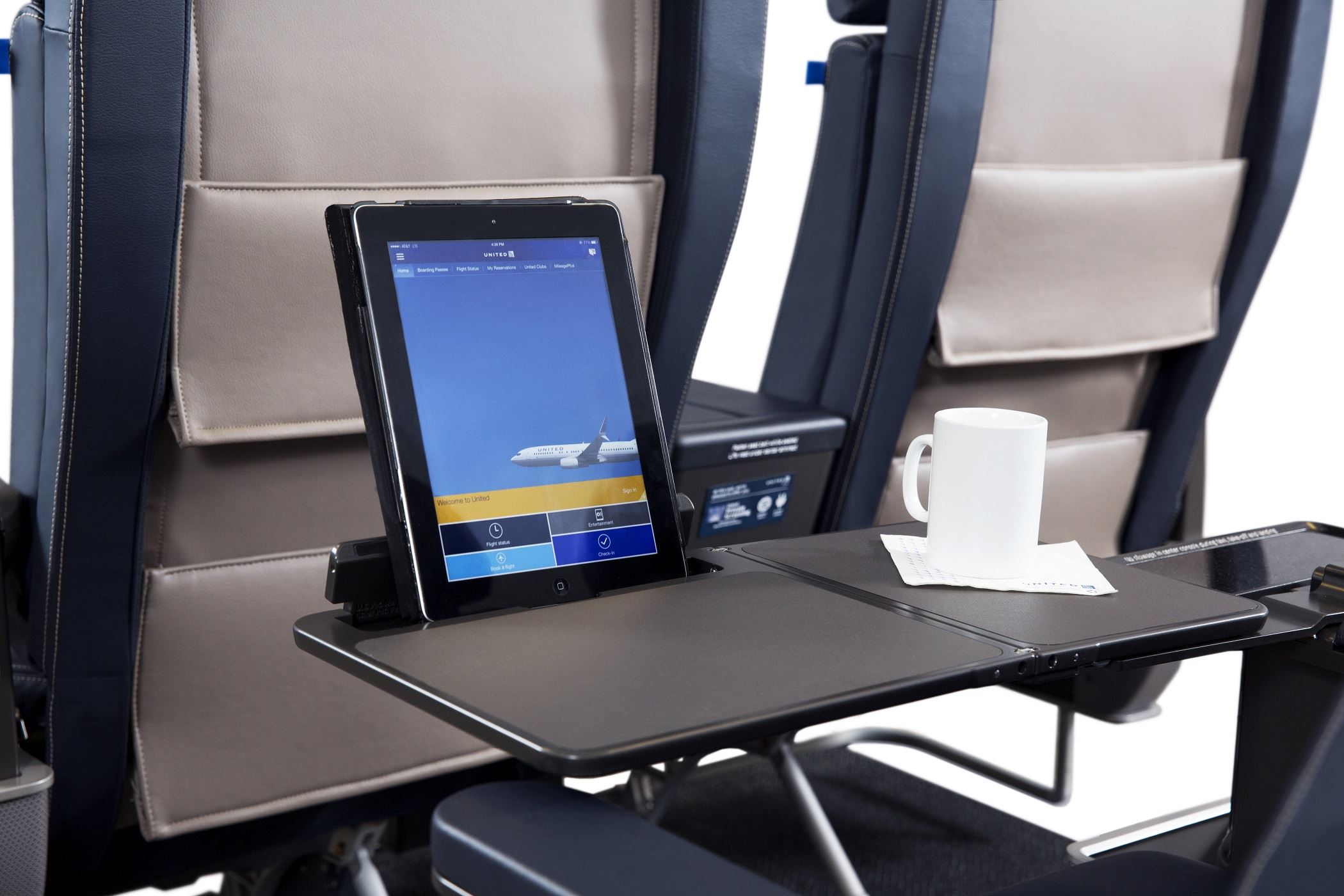
United Airlines’ new Premium Economy class is available in international markets, it’s also looking at adding the product to select domestic routes, as well. The airline revealed the plan where it said it will also expand its lowest-fare type — basic economy — to transatlantic and Latin American markets later this year. Both American and Delta have already said they will offer that rock-bottom, highly restricted fare in international markets, as well, starting this spring.
With its multi-pronged class strategy, United could end up with four distinct types of coach fares on many flights: basic, standard economy, economy plus (with extra legroom), and Premium Economy (which might feature a better seat to distinguish it from the next best product).
The carrier would still maintain a first-class on domestic flights and its business class, dubbed Polaris, on international routes. Creating distinct service classes has another benefit; they can be booked through GDSs, as opposed to the current practice of giving coach fliers a chance to buy an extra-legroom seat for a flat fee, usually through the airline’s own website.
“Segmentation allows us to compete for all customers,” is how United explained the rationale behind the varying service types, although it has yet to reveal details of how the Premium Economy would work domestically. While this cabin section is popular on long-distance international flights, where customers are willing to pay a hefty premium to escape coach class, it has yet to materialize in the U.S. because it might not make economic sense aboard a smaller narrow-body plane. United said it will probably reveal details later this year but did not indicate when the domestic product will be available if it does indeed get the green light.
For international flights, however, United said it is pressing ahead with its launch of the Premium Economy to select destinations under the brand name “Premium Plus” later this year. While it has not unveiled a prototype yet, the seat is expected to be several inches wider than the normal 17-inch-wide coach seat, with inflight service featuring china dinnerware, complimentary alcoholic beverages, Saks Fifth Avenue blankets and pillows, and amenity kits. And United will join a crowded field; both American and Delta are already launching Premium Economy internationally and most major international carriers have had the product for years.
Just how far carriers can go with this segmentation strategy remains to be seen. Henry Harteveldt, a travel industry analyst with Atmosphere Research, said that a domestic Premium Economy class might be perceived as too similar to existing domestic first class. But on the other hand, recent research shows that consumers are looking more favorably on the unbundled fare trend, where everything from added legroom to WiFi access carries an extra price tag. “They say that it’s giving them more choice — why pay for what you don’t need?” he said.
Your guide to spring skiing in Whistler
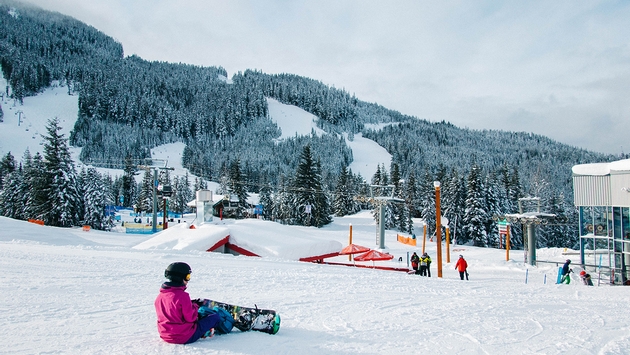
Though spring is well underway, ski season is hardly over. In Whistler, less than two hours north of Vancouver, the mountains get an average snowfall of 98 inches in March and 33 inches in April, resulting in gorgeous trails that last well into May. In fact, Whistler Blackcomb has one of the longest ski seasons in North America and even has its own permanent snow area.
Spring skiing in Whistler means gorgeous snow, blue skies and sunny days, not to mention great deals on hotels and lift tickets as well as the annual World Ski & Snowboard Festival taking place from April 10-15.
If you’re itching to hit that fresh powder and haven’t been skiing this season, Whistler is the place to go.
Where to Stay
Whistler Village has its share of hotels, but Delta Hotels by Marriott Whistler Village is by far one of the best. The contemporary hotel is located right in the village, just a quick stroll from the famed ski resort as well as several great restaurants and bars and the Whistler Olympic Plaza.
Among the hotel’s many amenities are heated outdoor hot tubs, an indoor/outdoor pool, sauna, a pub known as The Brickworks Public House, Hy’s Steakhouse, and for convenience, an on-site ski/snowboard shop.
What we love most, of course, are the rooms. The hotel boasts three different categories to accommodate small to large groups: standard rooms, one-bedroom suites, and two-bedroom suites. For a family or group of four, a one-bedroom suite offers plenty of space plus a fireplace, tub in the bathroom, a smart work desk, small balcony, and lovely robes and slippers (because you would want to do an après ski dip in the outdoor hot tub during your stay).
Ski and Snowboard
For skiing and snowboarding, head to the Whistler-Blackcomb Resort, acquired by Vail Resorts in 2016. It is one of the largest ski resorts in America, if not THE largest, combining two mountains—Whistler, which was originally developed for the 1968 Winter Olympics, and Blackcomb, which opened less than 20 years later—and featuring 240 trails. More importantly, it boasts excellent snow and elevating trails.
Thanks to its assortment of zones and terrain, the resort has trails for all skill levels. Beginners are welcome as the resort has its own Snow School that offers private and group lessons as well as ski and snowboard camp with certified instructors. Advanced and pro skiers, on the other hand, will be impressed by the intermediate and advanced terrain parks.
Whether you’re taking on the beginner trails or tackling the advanced trails (or even trying your hand at heli-skiing), don’t miss out on riding the Peak 2 Peak Gondola, a three-cable lift that links Whistler and Blackcomb and offers stunning panoramas of the mountains.
Apres Ski Activities
Give your legs and feet a break, at least for a day or two, as Whistler offers other fantastic snow-related activities.
Try your hand at snowmobiling with Blackcomb Snowmobile. If you haven’t been snowmobiling before or you’re fairly new to the sport, take their two-hour scenic tour, which starts off slow with the basics then takes you higher up on more uphill trails to their cozy mountain cable for hot coffee, a hearty breakfast and winter wonderland panoramas.
Or take to the skies for aerial views of the snow-covered valley between the two mountains by zip lining in the snow with Ziptrek Ecotours. The zip lining tour operator, which boasts several lines, suspension bridges, and platforms, offers six tours. Take the Bear Tour if you’re a beginner or the more exciting Twilight Tour.
And at the end of the day, soothe your sore muscles and unwind your mind at the Scandinave Spa. Just a stone’s throw away from town, the famously silent spa offers Whistler travelers a Scandinavian-type spa experience with its hot and cold circuit set in an idyllic, snowy setting that comes with views of the surrounding mountains.
Take a dip in its hot and cold plunge pools, relax in the sauna and steam rooms, get a massage, and then relax by the firepit with a book in your hand, all without having to deal with any unnecessary chatter or the selfie-taking bunch.
Where to Eat
While Whistler is not exactly a foodie destination, it has several restaurants that serve luscious food. You can indulge, for example, in prime steaks and seafood at Hy’s Steakhouse. Pair your dishes with fantastic cocktails like the Cucumber Martini and luscious wine.
Or enjoy a night of fine dining at Bearfoot Bistro where you can also learn the art of Champagne sabering (it’s easier and more fun than you think) in their cellar or enjoy a vodka tasting in their ice room.
Best yet, feast on the delectable fare at more than 6,000 feet above sea level with calming views of the neighboring peaks. Christine’s on Blackcomb isn’t just bells and whistling; it also makes some of the best dishes in all of Whistler.
Where to Drink
There are many bars in town, but we like The Brickworks Public House’s vibe—they have a digital jukebox inside and host live music two nights a week, cocktails and hearty plates, as well as BrewHouse’s craft beer menu. Fun flourishes throughout, including a model train that runs on the tracks just below the ceiling.
Gear You Need
For a much better ski/snowboarding experience, you must have the right gear. It might not be obvious to first time or beginner skiers, but there are some things that are an absolute necessity—to keep you warm, dry, and protected from the elements.
Base layers: Layering is important, but wearing the right layers is more important. Choose base layers that are designed to protect you from the cold. Patagonia’s Capilene Thermal Weight Crew, a Fair Trade Certified product, is lightweight and breathable yet it keeps you amazingly toasty. For bottoms, Obermeyer’s Nellie Tight helps keep your lower half very comfortable.
A jacket: Even though you’re going on a cold-weather vacation, there’s no need to overpack. One lightweight, waterproofed jacket, preferably insulated, is good enough. If you run hot, however, opt for a warm fleece vest instead.
Pants: Wearing proper ski pants is more important than anything else to keep you warm, comfortable, dry, and mobile. Patagonia makes some high quality insulated pants that fit quite nicely. They’re made of GORE-TEX® fabric with a durable water repellent finish.
Snow boots: While ski/snowboarding boots are available to rent, boots designed for snow aren’t. And you need a proper pair for when you’re snowmobiling, ziplining, or simply walking around town. The North Face’s Chilkat boots are sturdy and great for trudging on snow, while their Thermoball boots are warm, lightweight options.
Socks: Believe us; it’s not about the thickness. It’s all about the material. Get a pair of Smartwool socks instead. They’re thin, breathable, and warm.
Gloves: If you think you don’t need gloves when skiing, snowmobiling or ziplining, you’re completely wrong. A good pair of waterproofed gloves, preferably with wrist lashes, will protect your hands from frostbite.
Carry-all pack: If you’re planning on bringing your DSLR and other camera gear while skiing or doing your après ski activities—there’s nothing that compares to the views at the top of the mountains—consider a water repellent daypack that can fit other things as well like protein bars and water.
Luxury Hotels in Italy
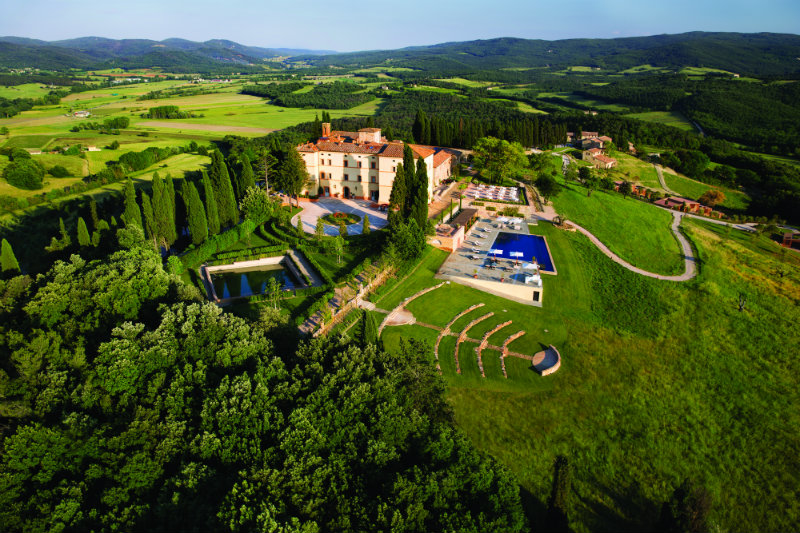
A number of hotel openings and renovations have been announced all over Italy in cities such as Como and Rome, as well as in the regions of Puglia, Sardinia and Tuscany. Plus, hotel collections like the Small Luxury Hotels of the World (SLH) have added Italian properties to their portfolios. Here is the latest on luxury hotels in Italy.
Vista Palazzo Lago di Como
Slated to debut in June, this luxury hotel will be the fourth from the family-owned-and-operated Italian hotel brand Lario Hotels. The new hotel — a renovated 19th-century lakeside Venetian-style palazzo located in the city of Como— will have 18 rooms and suites, each with large, Italian marble bathrooms with soaking tubs and separate showers. The property will also provide views of the lake throughout — the best of which will be from the guest-only rooftop restaurant, bar and library.
The 22-seat Sottovoce restaurant will serve traditional local cuisine. The bar will have an outdoor space, ideal for enjoying a prosecco or regional wine at sunset. Guests can also reserve a private chef to prepare dinner in their suite.
Guests get a personal concierge who can book private dinners, inform guests of cultural and social events, organize private visits to museums, book a table at restaurants in Como, and more.
Vista Palazzo Lago di Como will become one of six hotels on Lake Como to remain open year-round. Guests can take advantage of the several ski resorts located within two hours of the property, which can be reached by public and private transportation.
Hotel Hassler Roma
After a three-week closure in January, Hotel Hassler Roma, located atop the Spanish Steps, has debuted its updated Presidential Suite San Pietro, which received the latest furniture and fabrics while maintaining much of its original style. The bed was shifted, so now guests can view the whole suite without having to get up.
The property reduced the number of rooms from 92 to 91 but created eight suites (there were 13; now 21). The updated suites have elegant living rooms and bedrooms with walk-in closets and marble bathrooms.
A number of public spaces in the hotel were refurbished as well. The entrance and lobby were outfitted with new Botticino marble flooring and upholstery, and the concierge and reception desks are now finished in brown with golden foil decorations. Additionally, Salone Eva, the all-day dining bistro, and Sala Vietri, the lobby lounge / bar, received new mirrors, lighting and upholstery. The small gate at the entrance of Salone Eva, which has been part of the hotel for over 50 years, has been gilded again with gold leaves.
Castello di Ugento
This new hotel in Puglia in the southern tip of Italy is house in a 17th century castle that’s been in the d’Amore family for almost four centuries. Left empty for decades, the castle underwent a four-year, €10 million-restoration project ($12,429,100) and reopened in October.
The castle is now a cultural destination as it is home to both an extensive art collection and the Puglia Culinary Centre, overseen by star chef Odette Fada, who has appeared on Top Chef Masters and is considered one of the best Italian international chefs. This is an exclusive partnership with the Culinary Institute of America, and the only such collaboration outside of the United States. Classes can be fully customized and cover Italian cuisine and wine pairings.
The restaurant Il Tempo Nuovo serves fresh fruit and vegetables from the kitchen garden, also planted with medicinal herbs, and underground, the 500-year-old cistern now houses a wine cellar where tastings take place.
There are only nine rooms and suites, decorated with a mix of antiques, bespoke walnut armoires and contemporary pieces from Italian designers like Cassina, Poltrona Frau, Minotti, Ceccotti and B&B Italia. Plus, the property showcases restored frescoes, aromatic walled gardens, and a museum wing hosting temporary art exhibitions.
Castello di Casole
Belmond — a collection of hotel and luxury travel adventures around the globe, formerly known at Orient-Express — has acquired the Castello di Casole in Tuscany. With rose gardens, an outdoor infinity pool, antique furnishings, and a spa housed in the vaulted wine cellar, this historic castle hotel provides a secluded luxury experience.
Belmond plans to inject $9 million into the 39-room, 4,200-acre property over the next four years, bringing the total room count to 41 along with two new luxury villas. The Castello di Casole is located just 40 minutes from Siena and an hour from Florence, meaning guests have the opportunity to explore Tuscany during their stay.
Belmond currently has seven Italian properties in its portfolio including the Belmond Villa San Michele in Florence, Belmond Hotel Cipriani in Venice, and Belmond Hotel Splendido in Portofino.
Small Luxury Hotels of the World
SLH recently added a number of hotels in the Americas and Europe to its collection of properties, including New York, Spain, Greece, and Italy. The newly added hotels in Italy include:
Villa Eden The Leading Park Retreat
SLH has added the Villa Eden in Merano, a property that puts a focus on the health and wellness, whether it be a relaxing trip or a more immersive retreat. There is a dedicated team of spa therapists and medical professionals that can help to plan bespoke programs focused on guests’ specific health and wellness goals. There is also a pool with Alpine views, yoga classes and bikes available to explore the countryside and town. The restaurant features dishes from South Tyrol, with an option for tailored nutrition plans.
Hotel Vilòn
This hotel in the heart of Rome is a short trip away from the Spanish Steps, Trevi Fountain, Pantheon and the shopping district. The revived historic mansion in the Campo Marzio neighborhood used to be a convent and dates back to the mid-16th century, when it was known as the “House annexed to Palazzo Borghese.”
Throughout the property, guests will find marble bathrooms, velvet furnishings, and elegant works of art – hallmarks of architect and designer Paolo Bonfini. Guests looking to explore Rome can contact the concierge to arrange tailor-made sightseeing trips and exclusive transport.
Villa di Piazzano
This historic, family-run estate, dating back to 1464, is located in the countryside just outside Cortona, a town on the border between Tuscany and Umbria. Originally the hunting lodge of Cardinal Passerini, the Renaissance country estate in the hills has been restored to provide “down-to-earth luxury” to guests.
La Villa del Re
Located on the waters of the Costa Rei beach on the southeast coast of Sardinia, La Villa del Re is an adults-only luxury beach resort surrounded by Mediterranean gardens. The beach resort’s design is inspired by traditional Sardinian architecture, while its rooms fuse contemporary comfort with Italian style. Guests can enjoy the outdoor infinity pool, or relax on the terrace.
Il Melograno
Set in an ancient olive grove in Puglia, this country estate is considered throughout Italy as the first masseria (a fortified farmhouse used to protect Puglia’s rich produce from Saracens) to open its doors to guests. The chef at the 400-year-old property uses ingredients grown in the hotel’s own garden and fresh fare from the Adriatic Sea. The estate also owns 200 protected olive trees and produces its own Extra Virgin Olive Oil.
Guests can learn the traditional Apulian pizzica or tarantella dance, sign up for the hotel’s olive oil tasting session, or sight see via vintage car, Cinquecento, or by Vespa.
Airline official calls for harsher penalties on airplane-drone near-misses
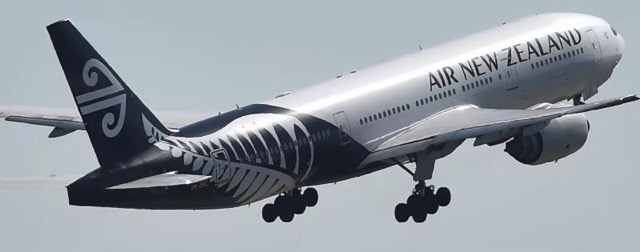
An unidentified drone operator nearly collided his UAV with an Air Newzealand plane descending onto Auckland airport.
Air Newzealand flight NZ92 heading from Tokyo to Auckland had an extremely close near-miss with a rogue drone on Sunday, prompting officials from the airline to urge legislative authorities to increase penalties for such behavior.
We recently reported on the rampant increase in near-misses between drones and airplanes in the U.K., but clearly, this isn’t a localized issue. Where there are drones, there will be at least some operators irresponsibly piloting them into commercial airline airspace.
The drone in question reportedly came as close as 16 feet of the plane, and almost caused a “serious incident” to occur. Remember, an object crashing into a jetliner’s engine can render it utterly useless, and result in a much higher risk of that airplane losing control. According to the BBC, the pilots of NZ92 noticed the UAV during their landing procedure at Auckland airport and feared a collision with the plane or damage to the engine. Thankfully, none of that occurred.
“NZ92 was just meters away from a serious incident on Sunday,” said Captain David Morgan, Air Newzealand Chief Operations Integrity and Standards Officer. “The pilots spotted the drone at a point in the descent where it was not possible to take evasive action.”
Morgan is essentially explaining that at a certain point in the commercial jetliner’s descent, its safety is at the whim of anyone who might fly a drone into its engine. Of course, the rate of these incidents is extremely low, but on Sunday, those chances were high.
In the wake of this disturbing yet fortunate incident, Morgan urged authorities to establish “tougher deterrents” for those considering to trespass into no-fly zones, using the now highly-affordable and capable hobby drones. He wants the “reckless drone-use around airports” to stop, with potential prison terms as a possible consequence. As it stands, the laws in place result in a fine of up to $3,600, with the rules establishing a 2.4-mile no-fly area near any New Zealand airport. www.thedrive.com
Singapore Airlines’ new regional cabin product on its 787 jets
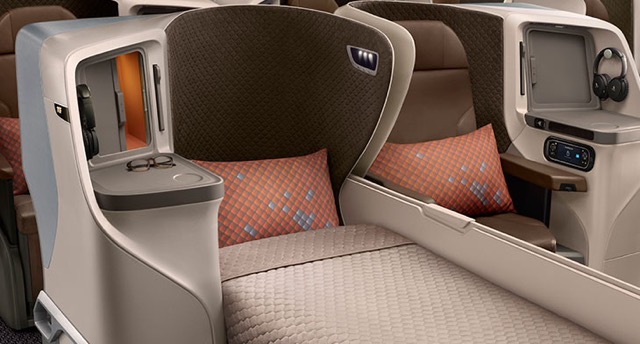
Singapore Airlines unveiled the results of its US$350 million investment in new regional cabin products on 20 Boeing 787-10s in April 2018. The new aircraft are configured with 337 seats in two classes, featuring 36 business class seats and 301 economy class seats.
Manufactured by Stelia Aerospace, the new regional business class seats are arranged in a forward-facing 1-2-1 staggered configuration to provide every customer direct aisle access, and can recline directly into a 76-inch fully flat bed.
Each seat measures up to 26 inches in width with retractable armrests that can be raised and lowered. Whether travelling alone or with a partner, adjustable dividers at the centre seats provide for a customised level of privacy to suit individual preferences.
A personal 18-inch full high-definition touchscreen monitor, powered by Panasonic’s latest eX3 system is offered, while there is also ample stowage space for personal items, a business panel with in-seat power supply and USB ports, and integrated reading light unit with adjustable lighting intensity.
Arranged in a 3-3-3 configuration, each of the 301 economy class seats, designed and built by Recaro, has an ergonomically designed contour backrest that provides greater comfort, with a six-way adjustable headrest with foldable wings to provide more neck support.
Economy class customers can enjoy a personal 11.6-inch full high-definition touchscreen monitor. Other features include personal storage space for small personal items, a coat hook, USB port and in-seat power supply.
All passengers on the new 787-10s will also have greater control over their in-flight entertainment (IFE) experience through myKrisWorld, allowing for world-first IFE personalisation. Features of myKrisWorld include content recommendations based on customer preferences and viewing history, and KrisFlyer members being able to bookmark and resume content, as well as customise and save preferences for subsequent flights.
SIA is also the first airline in the world to offer a series of games from Toca Boca and Sago Mini on KrisWorld. Initially available on the 787-10s, this popular entertainment option will progressively be made available on other aircraft types in the airline’s fleet.
The new 787-10s will also be equipped with in-flight Wi-Fi supported by Panasonic’s Global Communication Services and GSM phone services provided by Panasonic’s wholly owned subsidiary Aeromobile.
“The introduction of the new cabin products on our Boeing 787-10 fleet reinforces our unwavering commitment to product leadership, one of the key pillars of our brand promise,” said SIA CEO Goh Choon Phong.
“The new products were the result of a series of consultations with customers, and from working closely with our seat designers and manufacturers. We are confident that the new regional cabin products, with full-flat beds in business class and the many new features in economy class, will offer our customers a more comfortable in-flight experience even on the shortest flights.”
Biometric self-boarding at LAX a technological milestone
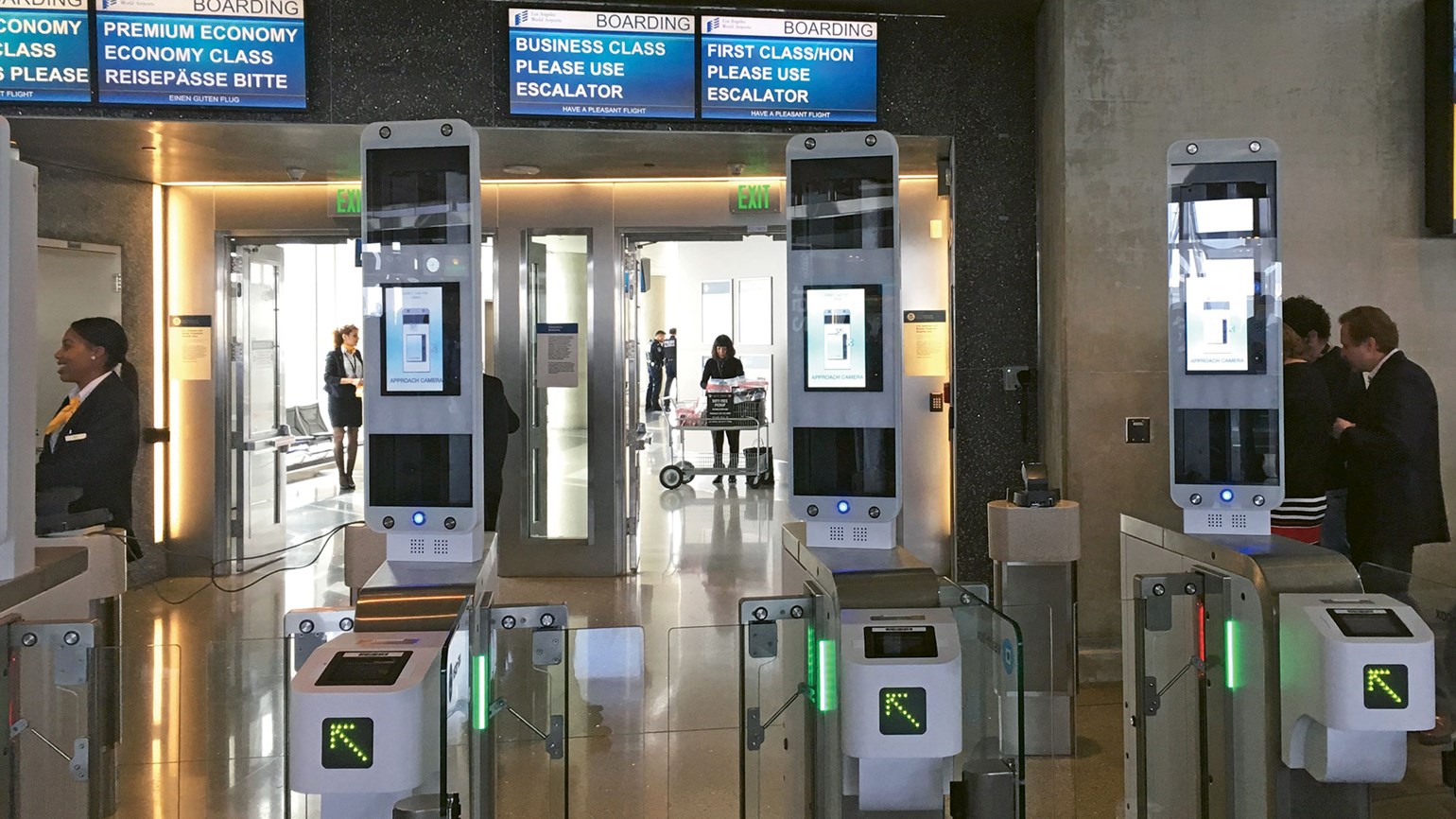
A trial project that is testing ticket- and passport-free international departures at Los Angeles Airport (LAX) is the first such project to involve more than one airline, making it one of the most advanced trials of its kind to date.
“The LAX technical demonstration is the first of its kind,” U.S. Customs and Border Protection spokeswoman Jennifer Gabris said.
Lufthansa and British Airways are now using the biometric self-boarding gates that LAX’s operator, Los Angeles World Airports, has installed in the Tom Bradley International Terminal.
LAX spokesman Frederick Badlissi said Qantas and Korean Air also plan to participate in the trial. Amadeus, which provided IT support to Lufthansa on the project, said the trial would continue into the summer.
The demonstration is part of CBP’s attempt to enable widespread use of biometric exits. The agency is under a congressional mandate to collect biometric data on all foreign nationals departing the U.S.
The exit checks will play a key role in advancing the federal government’s goal of more thoroughly tracking visa overstays by foreign nationals. Photos of international visitors will be held for years and can also be used to check facial images against FBI and terrorist watch lists. CBP’s goal is to process more than 97% of departing commercial air and sea travelers from the U.S. via biometric exits within the next four years.
For airlines, however, a big appeal of biometric exits is the prospect of improving boarding efficiency.
Facial recognition cameras photograph Lufthansa and BA flyers who use the biometric gates at LAX as they approach. The gates, designed by the Portugal-based technology company Vision Box, send the images to the CBP database for real-time verification. Within a few seconds, the system recognizes the passenger as having boarded, Lufthansa asserted in a news release. Neither a boarding pass nor a passport is necessary for display at the gate.
Lufthansa said it received positive customer feedback during initial trials and was able to board approximately 350 passengers onto an Airbus A380 in about 20 minutes. That is not a definitive gauge of efficiency, since Lufthansa’s typical configuration for the A380 is about 509 seats, and that takes an average of about 40 minutes to board.
CBP has been partnering with airlines and airports to deploy facial recognition exit tests since last year. Along with British Airways and Lufthansa, trial partners have included JetBlue and Delta. Trials have been conducted at Houston Bush, Houston Hobby, Chicago O’Hare, Miami, Washington Dulles, New York JFK, Las Vegas, Atlanta, Boston and Orlando in addition to LAX.
During the trial period, U.S. citizens who have privacy concerns related to facial recognition can opt-out of the biometric exit trials and instead present their passport and ticket, as usual, CBP’s Gabris said.
John Wagner, the deputy executive assistant commissioner for CBP’s office of field operations, told Travel Weekly last fall that if a U.S. citizen does go through a biometric gate, his or her image will be held for only 14 days and will be used only for analysis of how the system is functioning. Wagner added that CBP already has biometric photos, via their passports, of all U.S. citizens engaging in foreign travel.
CBP’s biometric exit efforts are just part of a burgeoning, though still early-stages, worldwide move toward the use of facial recognition technology in various parts of the airport experience, including check-in, baggage check, security screening, international entry and even entry into airport lounges.
A survey by airport transport technology company SITA, a designer of facial recognition airport systems, found that over the next three years, 63% of airports and 43% of airlines plan to invest in biometric ID management solutions.
How airlines are doubling down on comfort to lure Business Travelers

In 1944, Jean-Paul Sartre wrote that hell is other people, a maxim that perhaps most accurately describes the current state of commercial air travel, what with the long lines for security, overbooked flights, questionable “emotional support” animals, and the guy in 14F who can’t keep his elbows to himself. But for those lucky or savvy enough to fly in first or business class, hope is on the horizon as airlines double down on experiences and amenities for their most-prized clientele.
“Privacy is a theme,” says Brian Kelly, founder of the Points Guy, a travel website that reviews airlines. Take Delta’s new A350 aircraft, where every business-class seat comes with a sliding glass door, or Qatar Airways’ recently launched Q-Suite, with walls that push down for communal activities (work meetings and meals) and pull up for pursuits best enjoyed solo (movie binges and shut-eye).
Given that sleep has become a status symbol in our overscheduled era, airlines have devoted a lot of resources to soothing passengers into slumber. In January, American Airlines announced a new partnership with Casper, the buzzy mattress-in-a-box company, which will provide bedding for the lie-flat beds in the carrier’s premium cabins.
But even the softest of down from the trendiest of bedding brands is no match for the elements that assault the senses at 35,000 feet, with dry, stuffy air compounding the dehydrating effects of midair red wine consumption. One airline wondered if it had to be that way. Last year the Australian carrier Qantas partnered with researchers from the University of Sydney who used wearable technology to track how long-haul flights affect metabolism, hydration, and circadian rhythms. “When you’re a country like Australia that’s very far from almost everywhere, you’re forced to become experts in ultra-long-haul travel,” says Phil Capps, Qantas’s head of customer product and service.
Based on the findings, Qantas increased the size of the Dreamliner’s windows, turned up humidity levels, and developed a program of onboard exercises to stimulate blood flow. In March it will conduct another round of research, which will involve nutritionists and the in-flight food service team determining how the timing and ingredients of meals might aid in sleep and wakefulness.
Of course, relaxation in the air can be hard to achieve after a slog through a crowded airport, even if one has access to priority lanes and premium lounges. So what if you could skip the airport altogether? Private Suite, founded by Gavin de Becker, of the personal security firm Gavin de Becker & Associates, enables patrons to do just that.

Airlines that want to stand out offer great inflight amenity kits
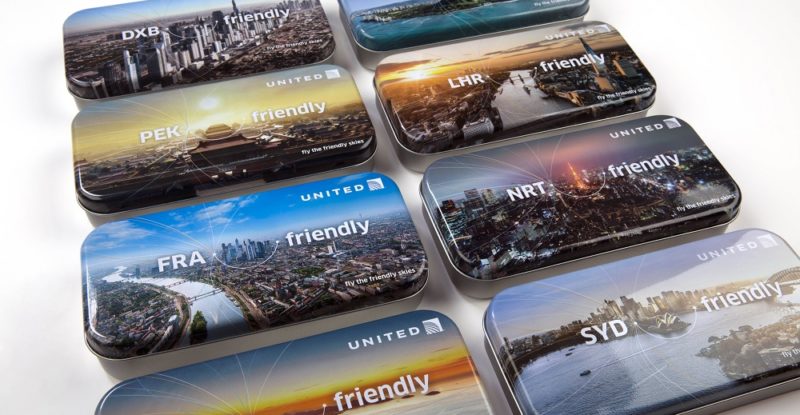
Airlines that skimp on amenity kits are choosing a false economy. Aviation is a competitive business and people still make choices based on brand, reputation, and perception, especially in the pointy end of the plane.
Airlines have a golden marketing opportunity to quite literally have customers carry their own branding home with them, to use it in their daily lives — and to think “you know, that case from XYZ Airlines really is useful”, or even to remark to family and friends “oh, yes, that one is from XYZ Airlines’ Delightfulness Class from when I went to Pago Pago”.
As far as brand touchpoints go, it’s an enviable position to be in.
Yet after the little tubes of lip balm and hand cream are used up, too many kits aren’t re-used, and end up as waste. With airlines and passengers eyeing environmental responsibility, it’s smart to make sure that kits are as attractive — and reusable — as possible.
The first trick with getting passengers to reuse an amenity kit is picking the size and shape they need. I find that most of the kits I end up reusing are the rectangular ones, around 8-9” long, 4-5” tall, and about 3” deep, whether hard- or soft-sided.
But I want to give a special shoutout to the soft-sided drawstring Air New Zealand bag that’s eight or nine years old now, which I use as a catch-all in my suitcase for those few miscellaneous items that always end up rolling about in the bottom of the bag. I’d love to see an airline with an option like this again, not least because I’m running out of those Kiwi kits!

Airlines that want to stand out from the crowd can vary from the general sizing trend but should do so carefully. Larger is certainly an option: in the years after the introduction of the iPad, numerous airlines went the way of a larger pouch to fit a tablet, although this trend has mostly run its course.
In the age of increasing ecological consciousness (and indeed a growing list of countries and localities that ban single-use shopping bags) larger reusable bags are a smart idea, particularly since they’re likely to be seen by many potential customers.
Swiss, which designs amenity kits in rotations, had an excellent example of an attractive red shopping bag with a repeating Swiss flag motif that I tuck away in the seatback pocket of the car for instances when I forget to bring one with me.

Smaller kits, too, are an option, although these risk looking and feeling a little on the cheap side unless they’re given a good amount of thought. A few years ago KLM had a slim Jan Taminau-designed travel wallet, which is lightweight, sturdy, and zips. I still use it to carry around foreign currency and the collection of international tap-to-pay cards and transit passes we’re all amassing these days.

Let me also praise the longevity and general usefulness of that relatively rare beast, the airline amenity tin. While these are less useful when traveling, they’re incredibly useful around the house: several serve in my office as pencil-cases, tins for postage stamps, storage for a variety of foreign currencies, the spot where I dump my keys on the shelf by the front door, and general catch-alls. And, of course, in the workshop or garage, they’re invaluable.

Smart airlines, though, should think about extending their branding on these tins to the inside, especially for those that have a hinged lid that is able to stay open.
Many passengers reuse an amenity kit as cable storage for earbuds, chargers, cables, connectors, and dongles we’re all stuck with, as well as on-the-go streaming options like a Chromecast that some travelers bring from home. Frequent travelers in particular often keep cables separate because x-ray security agents sometimes pull carryons with lots of electronic wires for extra checking, so being able to toss a bag with cables into a separate bin is often a smart move.
To maximize reusability for cables and suchlike, it’s important to have little pockets about the size of a dongle or coiled-up cable, into which cables can be slid to keep them from tangling.
A key tip for airlines is to think about the design inside, not just the outside. Cables and dongles tend to come in either white or black, so a smart move is to design kits with light — but not brilliant white — interior. What a perfect opportunity for a repeating airline motif.
Co-branding works well too: just think of those hard-sided Rimowa kits a number of airlines offer, which is always in demand.

With a bit of extra thought and an eye to design, airlines can increase the number of passengers who reduce their waste bill, give them free advertising, and increase customer loyalty. Now that’s an amenity. runawaygirl.com
Airlines are offering news amenities for healthier flights

From meditation, apps to exercise videos, healthier snacks to gourmet meals, airlines both international and domestic are renewing their commitment to healthy passengers.
Wellness isn’t a concept that seems synonymous with the ever-growing hassles of flying, but that could finally be changing. Some airlines are embracing the idea of healthier flying, offering calorie-conscious menus, and new exercise videos.
According to Beth McGroarty, research director for The Global Wellness Institute, a nonprofit organization for the wellness industry, even as seats shrink and flights get more crowded, many carriers want air travel to be more bearable (and even enjoyable). They believe wellness is the way to do that. “It’s part of the larger wellness movement happening in the travel industry,” she said.
And, unlike the usual trend of amping up onboard amenities for only their first and business class customers and stripping them away for passengers in the economy, Ms. McGroarty said that no passengers are left out in this recent wellness push. “Wellness in the air, in many instances, is more democratic,” she said.
Meditation Apps, Stretching Exercises and Yoga Videos
All United Airlines and JetBlue customers have access to the popular digital meditation service Headspace as part of their in-flight entertainment. JetBlue’s Headspace content includes videos that address travel topics, such as fear of flying and difficulty sleeping upright.
Among international carriers, Swiss International offers Headspace onboard long-haul flights, and British Airways has a Well Being channel on its in-flight entertainment systems that includes meditation and stretching exercises. Also, the Hong Kong-based carrier Cathay Pacific recently launched six in-flight videos, called “Travel Well With Yoga,” in a partnership with Pure Yoga, the popular yoga studio chain. Each video is between five and 20 minutes, and feature yoga and meditation exercises such as hip and back stretches and deep breathing.
Pillows, Blankets and Comfortable Sleep Gear
American Airlines started prioritizing wellness after conducting customer surveys and running focus groups with fliers about what they want. “We learned that our passengers care a lot about their well-being,” said Nick Richards, the company’s director of customer experience.
Less Junk Food, More Nourishing Meals
Mental well-being and sleep aside, airlines are also incorporating wellness onboard by offering healthier food and drink options.
Turkish Airlines, for instance, has a new Fly Good Feel Good campaign that includes a menu of herbal teas such as one with rooibos, sage, and lavender to help relieve stress and promote sleep. Another is an energizing blend with mate, mint, and ginger. Children are offered a traditional Turkish drink with milk, carob powder, and date syrup that’s meant to strengthen the bones.
In January, TAP Air Portugal tapped five Michelin-starred Portuguese chefs to create low-calorie Portuguese-influenced entrees for its business class passengers. Those entries will also be offered to economy passengers starting this summer, said Joel Fragata, head of the airline’s in-flight products. José Avillez, of the two Michelin-starred Lisbon restaurant Belcanto, crafted a stone bass in tomato and onion stew, along with coriander and basil potatoes for TAP’s fliers while Henrique Sá Pessoa, of the Michelin-starred Alma, also in Lisbon, came up with a lemongrass and ginger chicken curry.
“We want to showcase our delicious cuisine but do it with health in mind because people today are more and more health-conscious,” Mr. Fragata said.
A handful of domestic carriers, too, are encouraging mindful eating. Dr. Charles Platkin, a nutrition and public health advocate, and the director of the Hunter College NYC Food Policy Center, conducts an annual airline food study where he analyzes the economy food of every domestic carrier. In his latest study, released last December, he declared that Delta Air Lines is a leader “by a long shot” in its commitment to improving “its food in terms of health and consciousness.” Dr. Platkin’s analysis found that Delta’s meals, snack boxes, and individual snacks have an average of 480 calories, a decrease from the year before, at 527 calories.
Delta also frequently updates its food choices including its free snacks. Almonds, a pretzel snack mix, and a KIND Dark Chocolate Chunk Bar are among the recent offerings, and all are less than 200 calories and gluten-free. To purchase, fliers can choose from a menu that includes wraps from Luvo, a company whose mission is to create nutrition-focused meals.
In commending other carries in their commitment to wellness, Dr. Platkin also called out JetBlue’s newly available AmuUp box, packed with gluten-free crackers, hummus, olives, almonds, and a fruit energy bar. Tamara Young, a spokeswoman for the airline, said that adding the box to its onboard menu lineup is one of the ways the airline is weaving wellness into “its customer experience.”
Great dining and activities on Kauai’s Royal Coconut Coast

More than ever before, Kauai’s Royal Coconut Coast is enjoying its day in the sun. Hugging the island’s eastern shores, it recently earned TripAdvisor’s top spot among trending U.S. traveler destinations for 2020 — and it’s the only place in Hawaii to make that list.
With the town of Kapaa as its anchor, Royal Coconut Coast showcases a mix of accommodations, dining, and pastimes that are resonating with today’s travelers, according to Hilmy Dole, president of the Royal Coconut Coast Association.
“We’re seeing strong interest in Kapaa’s culture, attractions, lodging, food, and activities by both our visitors and our kamaaina (locals),” Dole said.
Here are five reasons it’s time to book a trip to the Royal Coconut Coast.
Accommodation Upgrades
Thanks to $37 million in renovation projects, hotels, and resorts along the island’s east coast are raising the lodging bar. Kauai Shores Hotel, Castle Resorts & Hotels’ Mokihana Resort, Pono Kai Resort, and Hotel Coral Reef Resort are among the properties revitalizing their accommodations and public areas.
Courtyard by Marriott Kauai at Coconut Beach is scheduled to begin remodeling of its guestrooms, meeting spaces, lobby, and courtyard in August. These upgrades follow rejuvenations last year at Kauai Coast Resort at the Beachboy and Castle Resorts & Hotels’ Kaha Lani Resort.
Annual Food Festival
The Taste of Hawaii event is nicknamed “The Ultimate Sunday Brunch,” but the yearly culinary bash boasts more than just pancakes and eggs. Held at Smith’s Tropical Paradise in Kapaa, the annual fundraiser for local causes dishes out delectable items concocted by many of the state’s best chefs.
Guests can savor gourmet nibbles while rubbing elbows with fellow food lovers. Beer and wine from more than 15 beverage vendors and live music by 10 groups add to the fun, as does an online silent auction. It’s slated this year for June 3 from 11 a.m. to 3 p.m.
Farmers Markets
Each week, the Royal Coconut Coast is ripe with farmers markets, where clients can see and buy ultra-fresh produce, meat and other Kauai-sourced edibles and souvenirs.
On Monday and Friday afternoons, crowds head to Kealia Farm Market in search of the day’s harvest and baked goods. Every Tuesday and Thursday morning, Coconut Marketplace turns festive with just-picked fruits, vegetables and flowers. On Wednesday afternoons, the market at Kapaa Ball Park touts appealing organic crops and Kauai-made items.
www.coconutmarketplace.com
www.kealiafarm.com
www.tastingkauai.com
Luau Times Two
The Royal Coconut Coast lays claim to a pair of high-quality luau options celebrating Polynesian culture. The Smith Family Garden Luau, a decades-old tradition, features four generations of a local clan who sing, dance, talk story and prepare luau food with family ties. It’s offered from three to five nights per week.
Luau Makaiwa, open since October 2015, takes place at Courtyard by Marriott Kauai twice weekly. Fronting the ocean where ancient royalty once played, it serves tried-and-true luau fare, plus specialties such as green coconut curry mahi-mahi, kaffir lime-scented rice and papaya-mango rice pudding.
www.smithskauai.com
www.luaumakaiwa.com
River Adventures
Through the heart of the Royal Coconut Coast runs the Wailua, Kauai’s largest navigable river. It sets an idyllic stage for activities such as boating and hiking tours.
Kayak Kauai helps clients explore the region during a five-hour excursion combining paddling, hiking to a waterfall, swimming in streams and munching on a picnic lunch. Guides describe the history and legends of the area and point out highlights like age-old rock-wall terraces.
For the less adventurous, Smith’s Kauai presents its beloved, open-air boat ride up the river to Fern Grotto. Staffers share songs, stories and a hula lesson along the way. Visitors have booked this tour for decades, and it never feels out of date.


